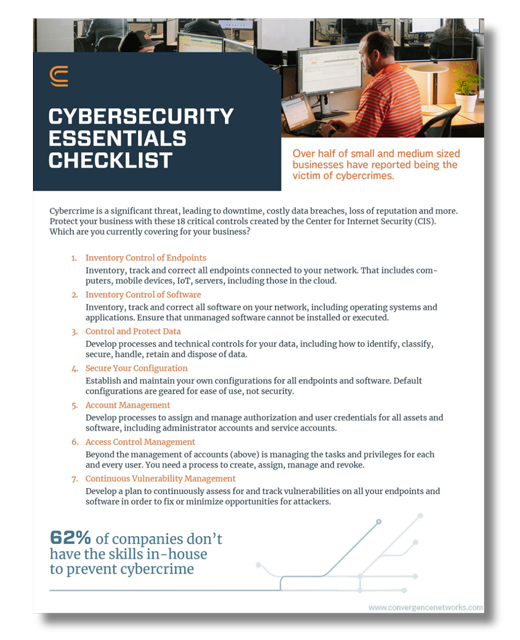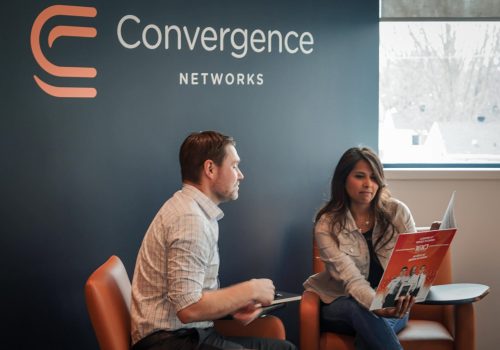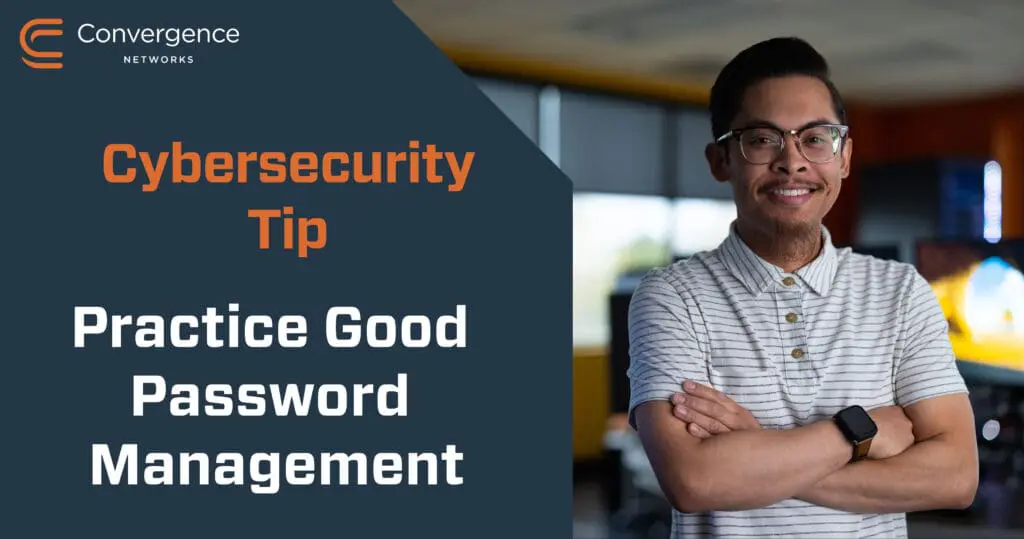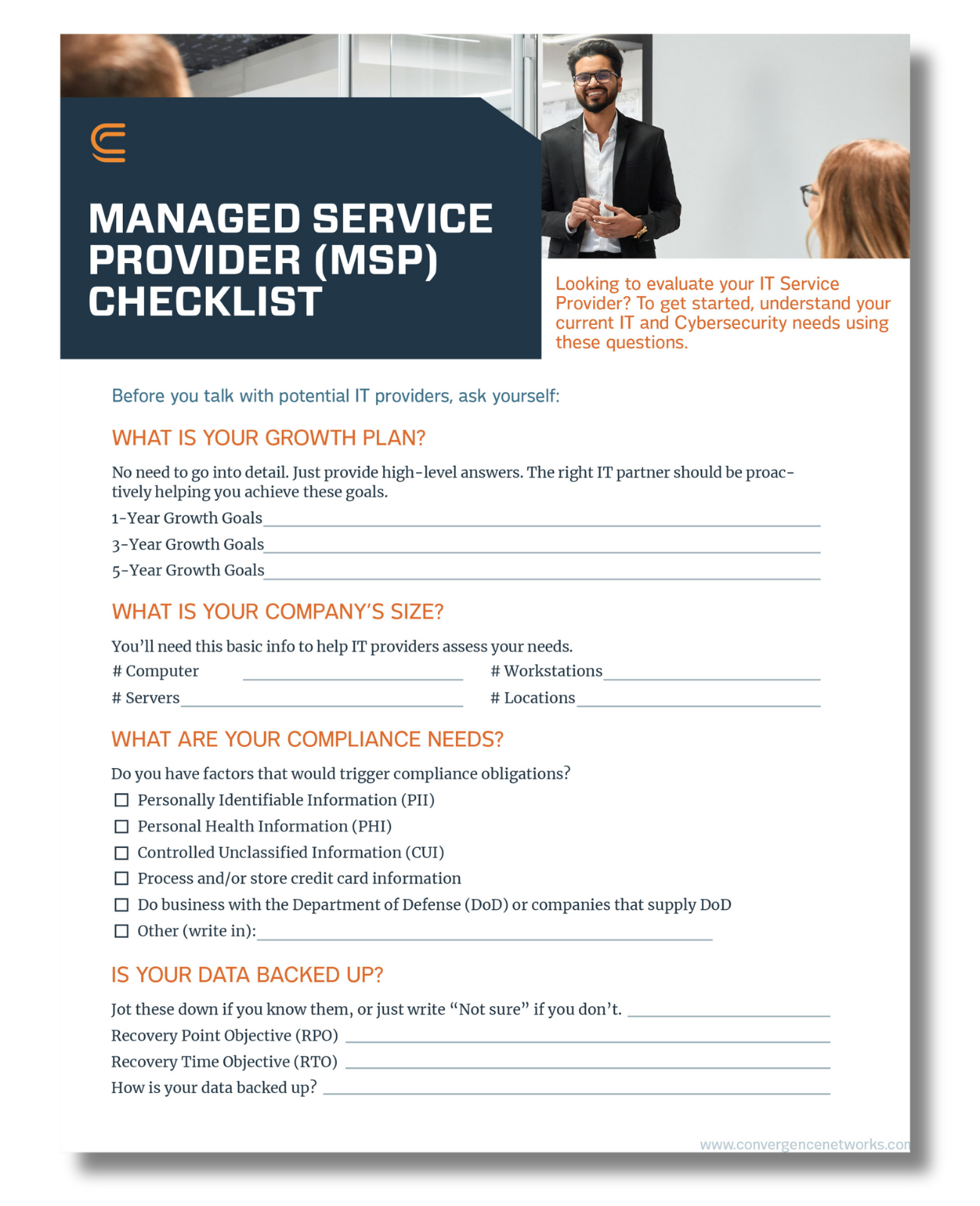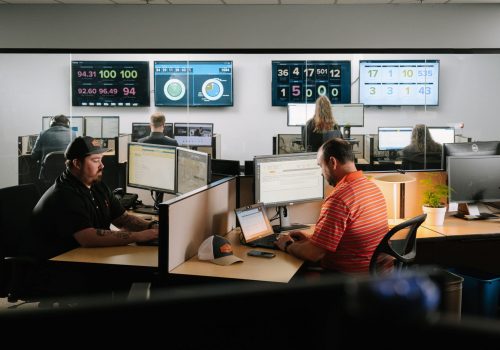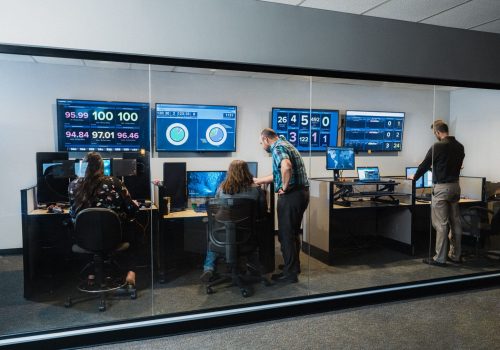Cyber Security Essentials Checklist
18 Must-Have Controls
Cyber crime is a significant threat, leading to downtime, costly data breaches, loss of reputation and more. Yet 62 percent of companies don’t have the skills in-house to prevent cyber crime. Where does your business stand? Use this Cyber Security Essentials Checklist to find out.
Included are 18 critical controls created by the Center for Internet Security (CIS). While there are many layers of protection within each control, the first step is just knowing that each category is covered. Get the checklist now.
Most Small Business Are Not Doing Enough
51%
Small businesses that say they’re not allocating any budget to cyber security.
14%
The number of small businesses that rate their ability to mitigate cyber risks as “highly effective.”
62%
Small businesses that report not regularly upgrading or updating their applications and software.
78%
Small businesses storing sensitive or valuable data that do not encrypt their data.
81%
Small businesses who verify asset location only once a year or even less often.
75%
Small business owners report that they do not have a disaster recovery plan in place.
It’s no wonder that 80 percent of SMBs worry about being the target of cyber crime within the next six months.
Cyber Attackers Love Small Business
Over 50%
Small and medium sized businesses that have reported being the victim of cyber crime.
50%
The number of cyber attacks that specifically target small businesses.
$149,000
Average cost of a data breach for SMBs (ransomware attacks average is $133,000).
66 Days
The average amount of time before a cyber attack is detected.
Types of Cyber Attacks
There is no shortage of ways that malicious actors try to access your network, steal your data or disrupt your business. Below are just a few examples. And cyber criminals are always coming up with new ones. Get on the road to better protection now.
- Phishing: Sending convincing looking emails with malicious attachments or links.
- DDOS (distributed denial of service): Targeting a server, website, network or computer to take it offline and disrupt your business.
- Man in the middle (MITM): Hackers insert themselves between your users and servers, taking control of sessions or IP spoofing to gain access to another server or application.
- Malware: Malicious software in any form, including ransomware, worms, trojans and a variety of virus and infection types.
- Password: Criminals use your passwords to access your network. With 73 percent of passwords duplicated, just having one can provide access to many systems.
- Drive-by: The attack you don’t even notice happened. You click a link or visit a website which then infects your system with malware that runs in the background. This is a popular way to gather data used in other forms of attack.
Take the first step toward better cyber security with this free Cyber Security Essentials Checklist. Within minutes you’ll see how you stack up in the 18 most crucial cyber risk prevention controls. Plus you’ll know right where to start when talking with your internal IT team or managed service provider.
Get the Cyber Security Essentials Checklist
Complete this form for your free download.
